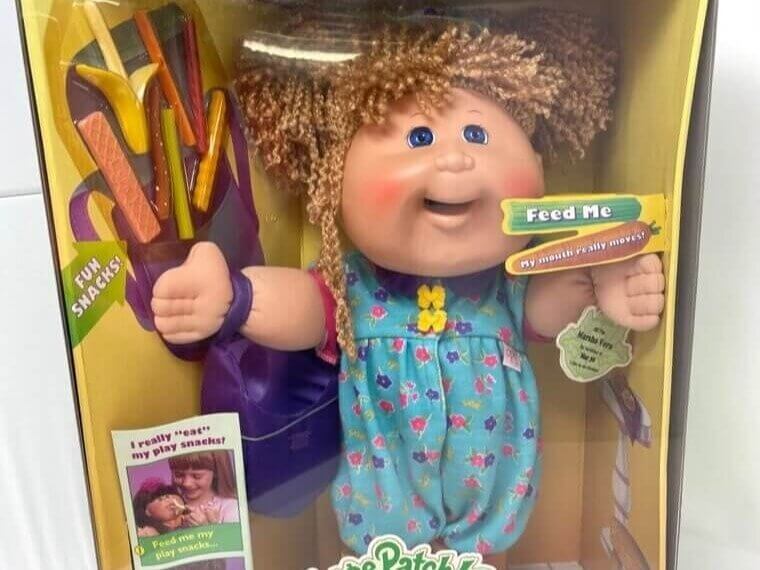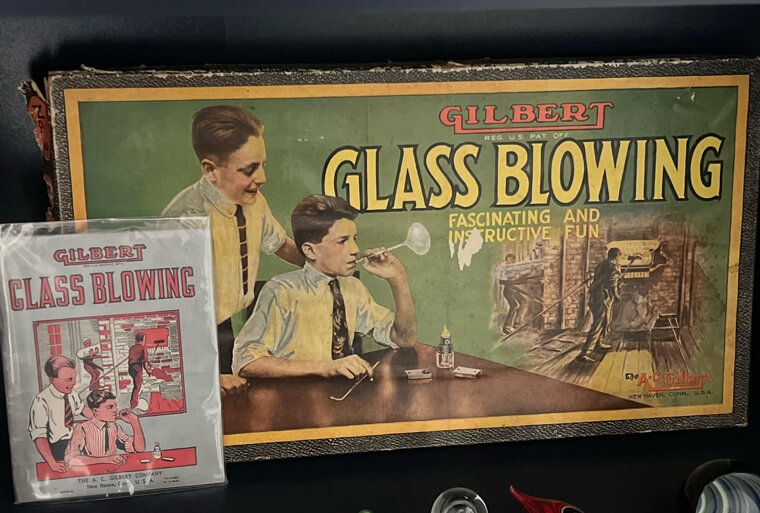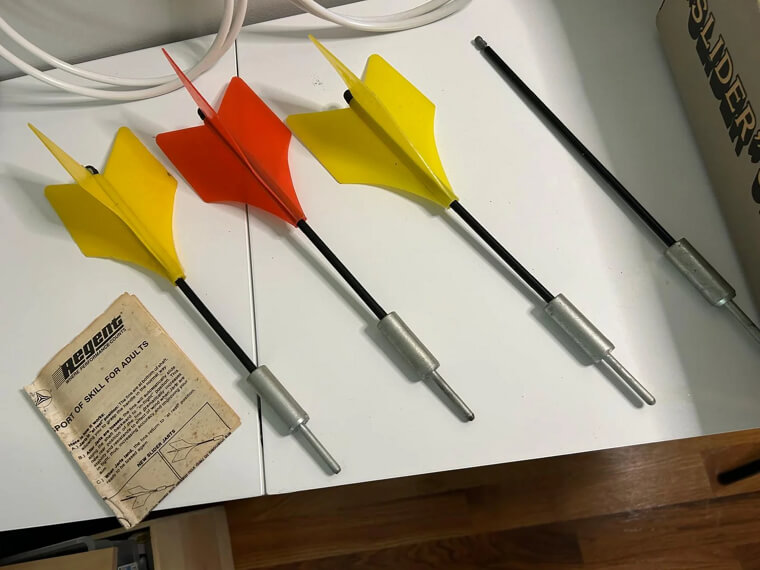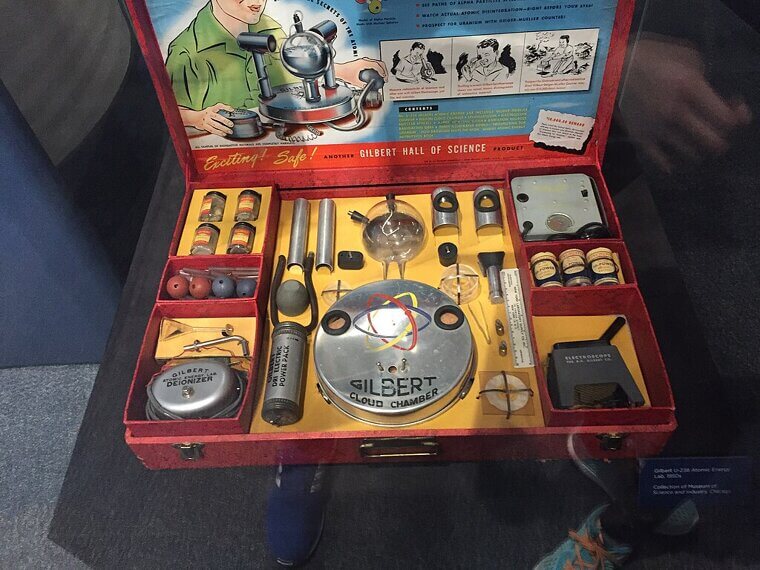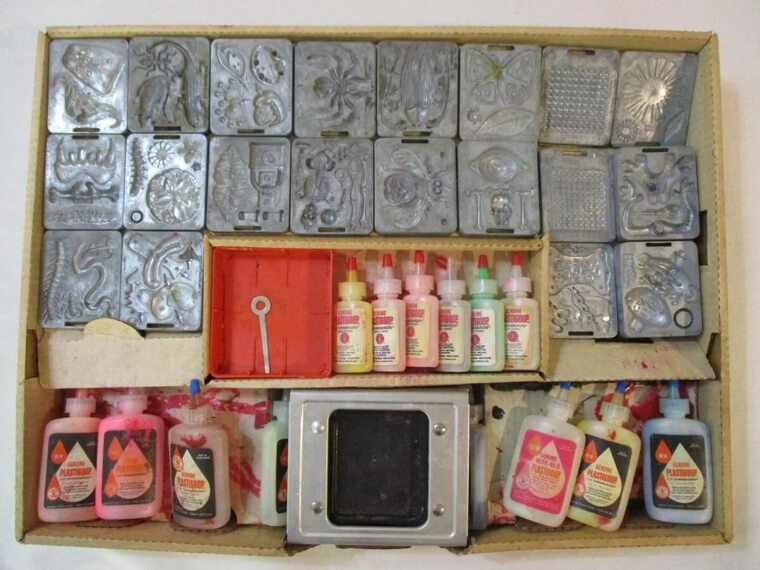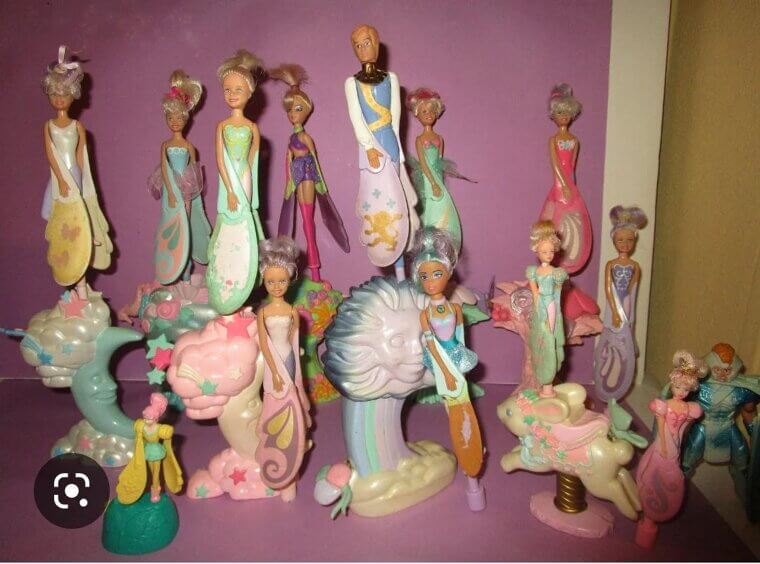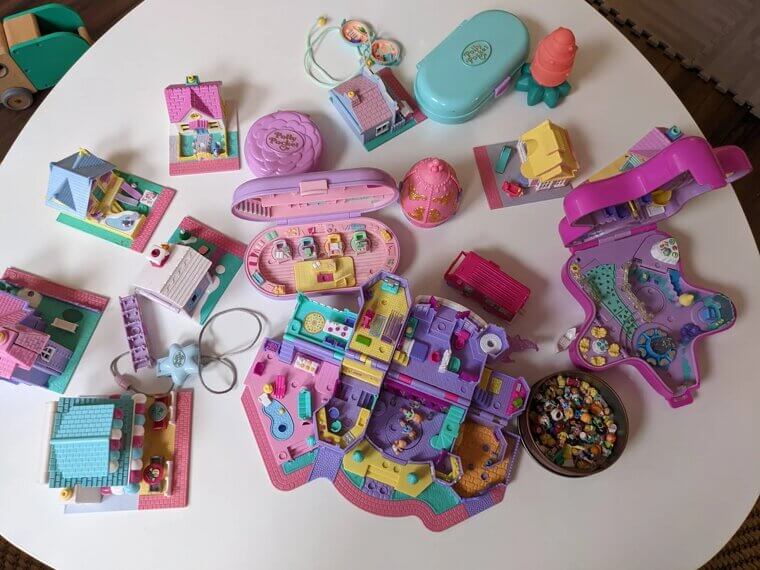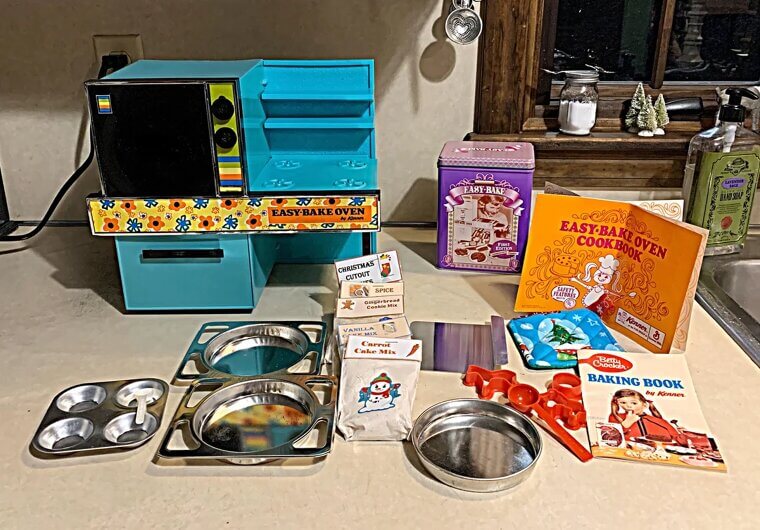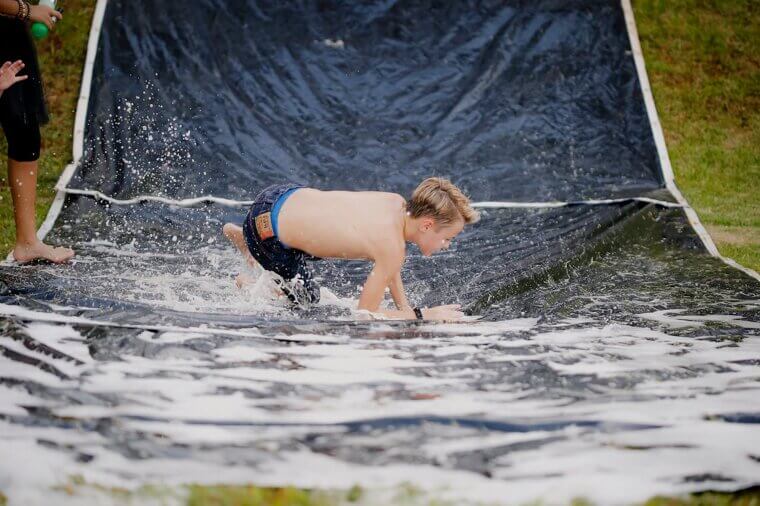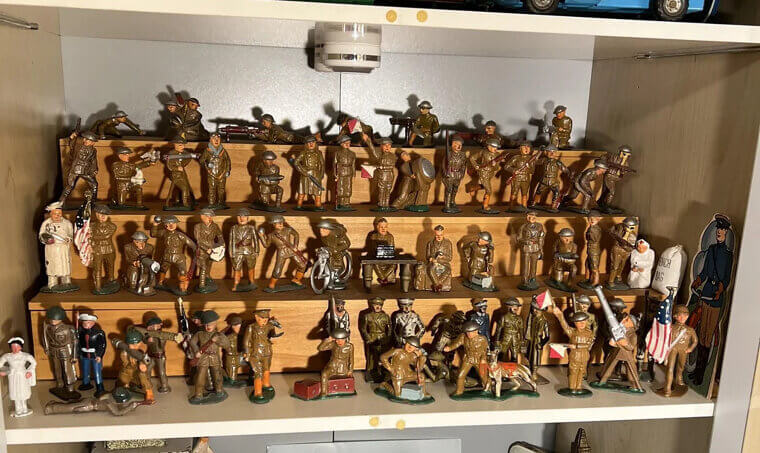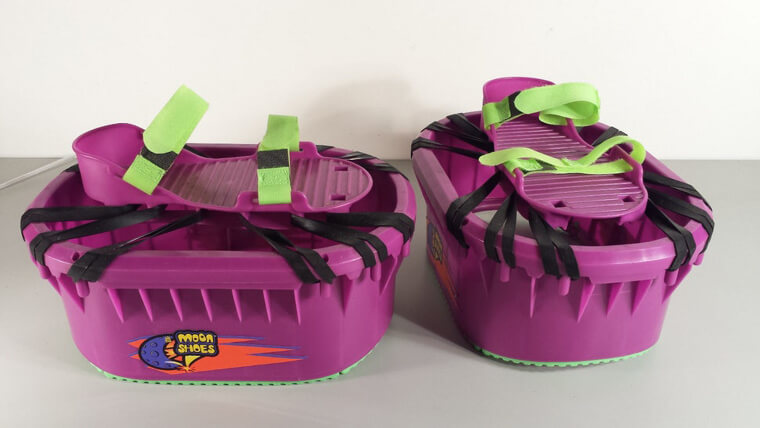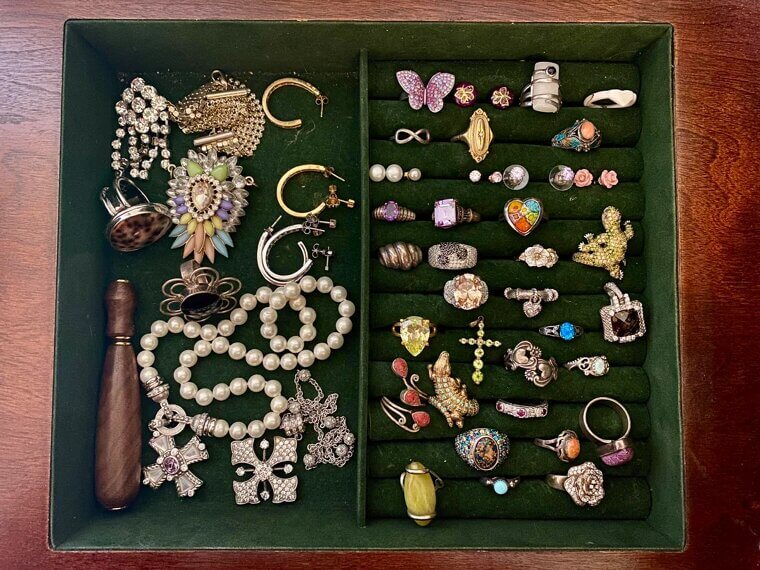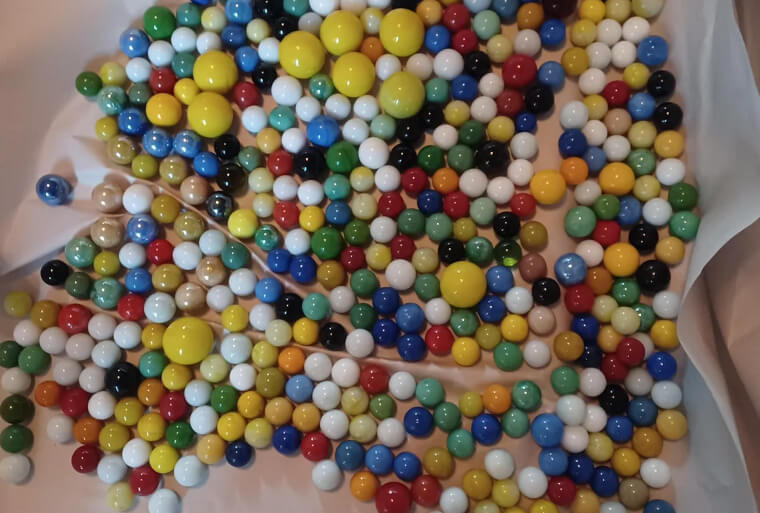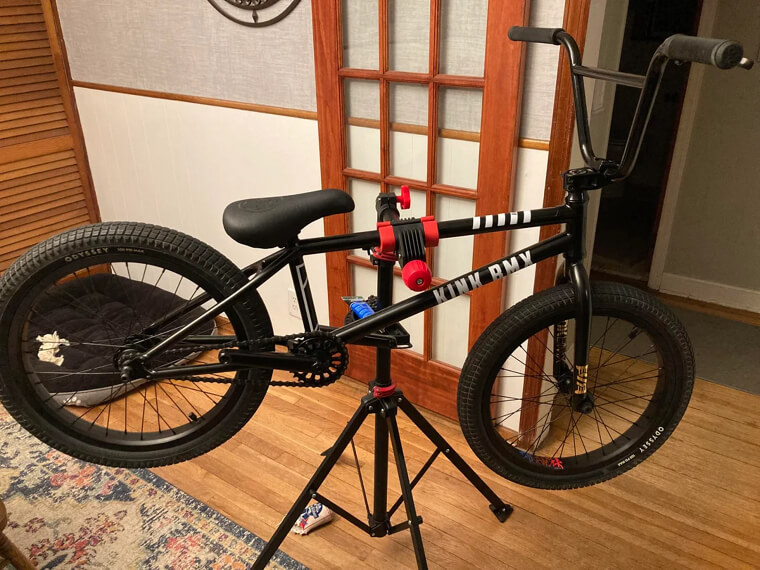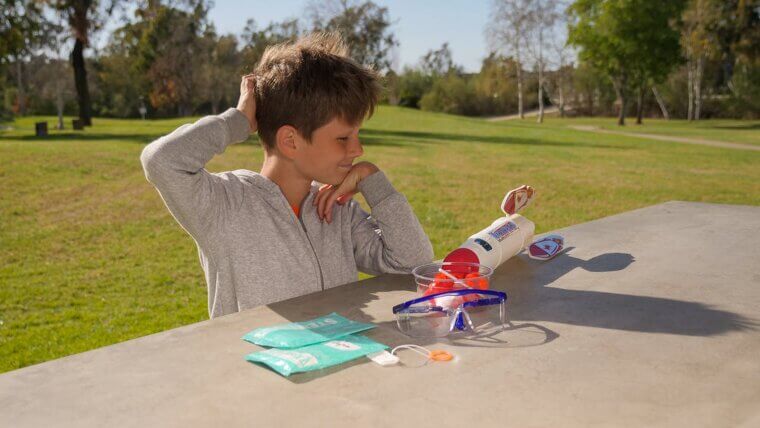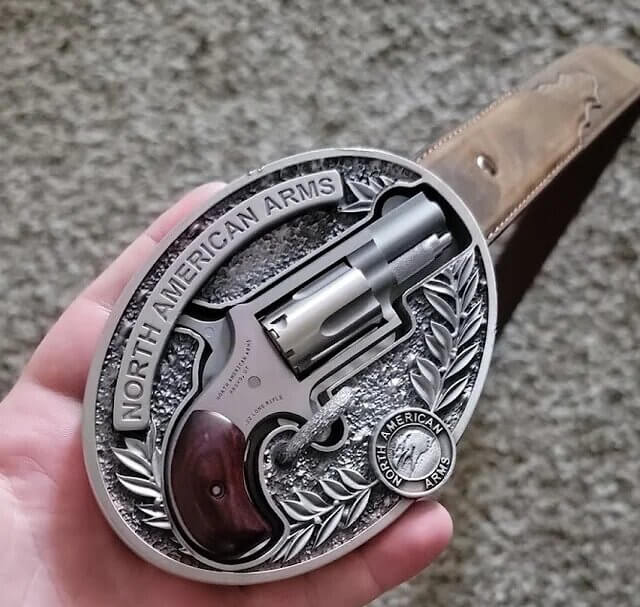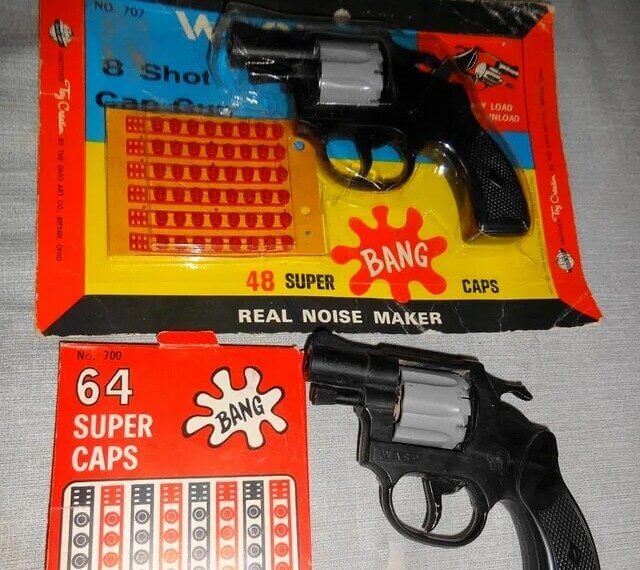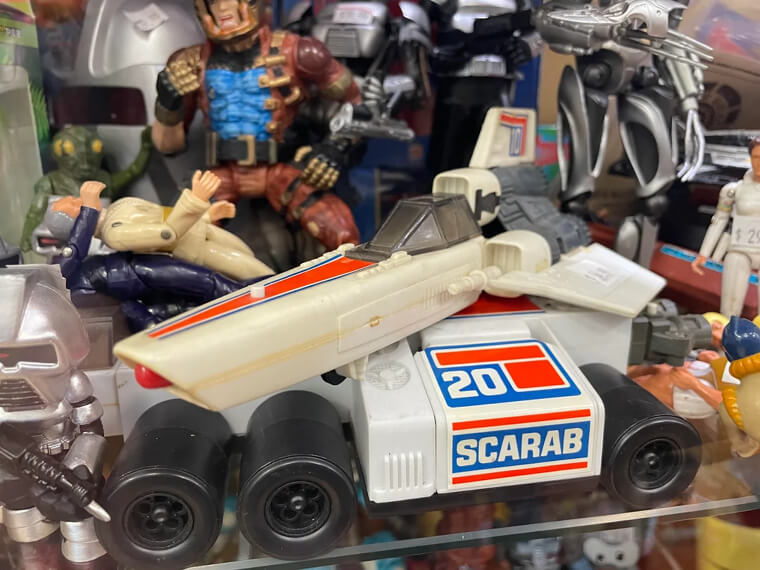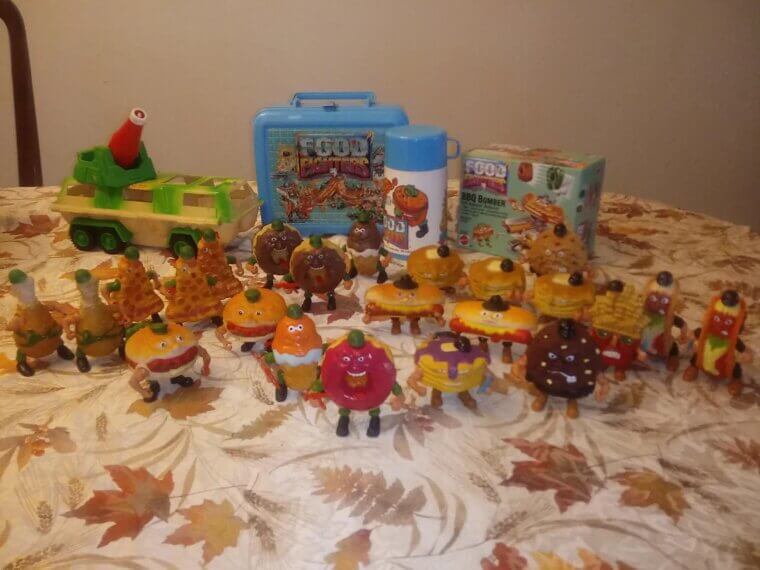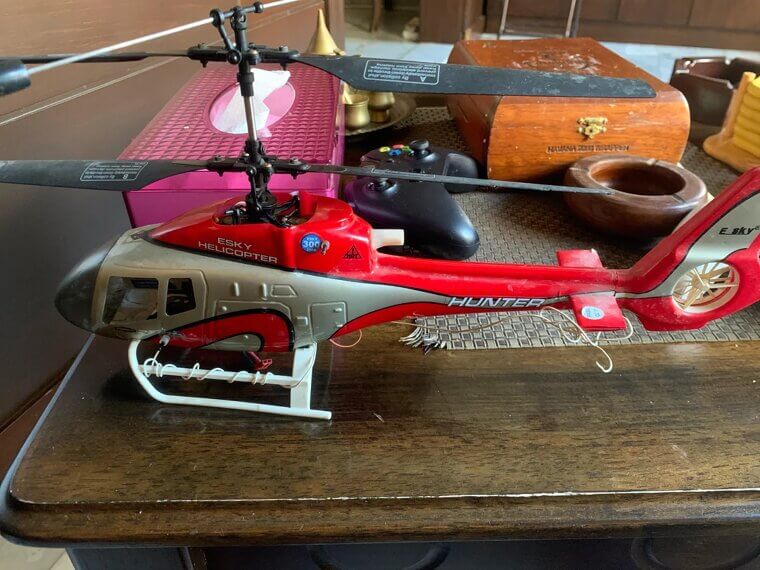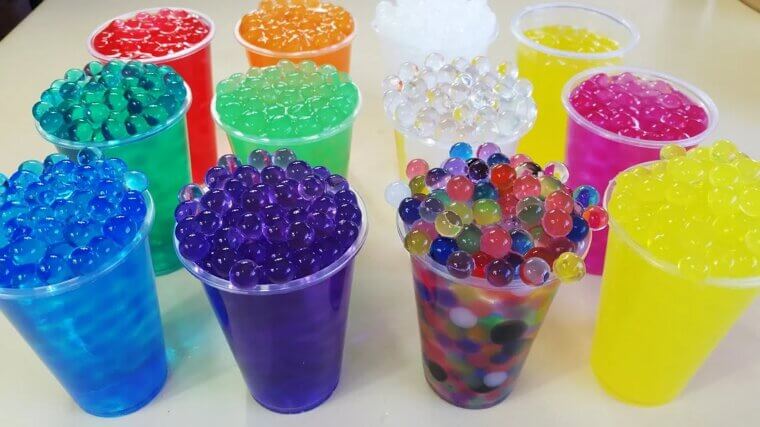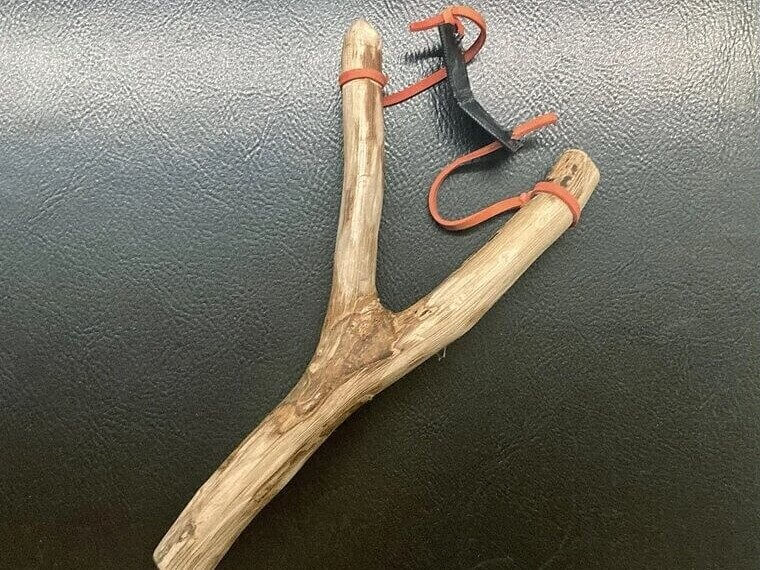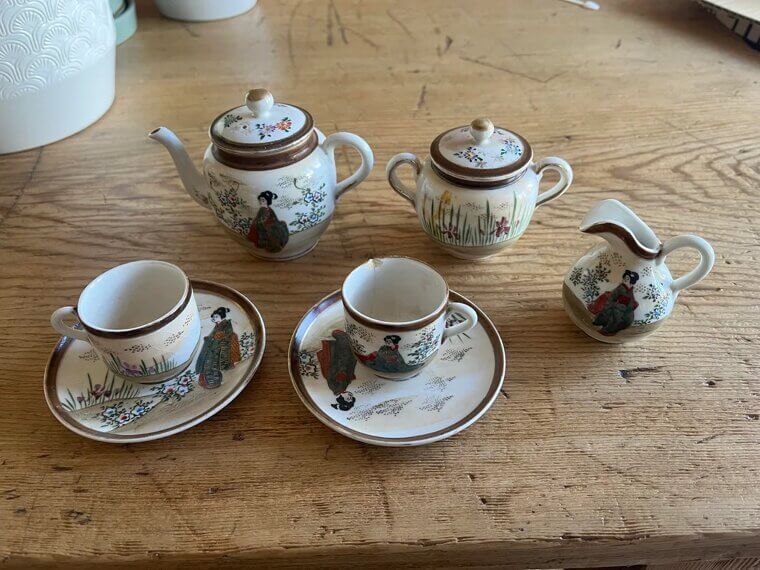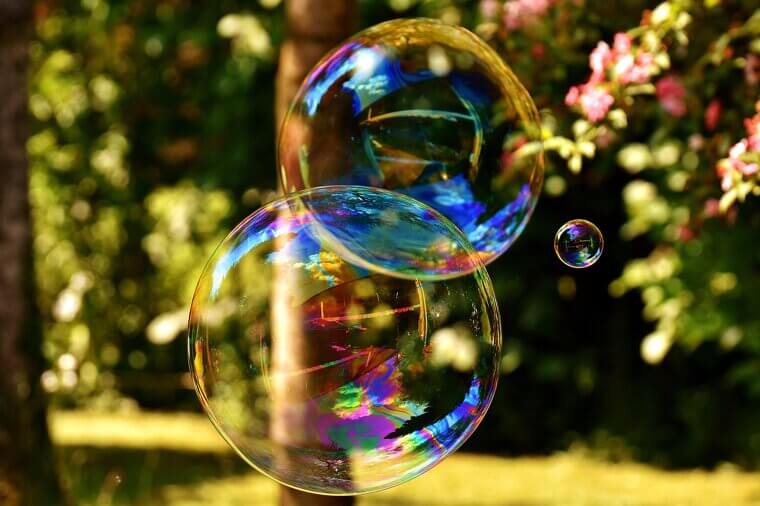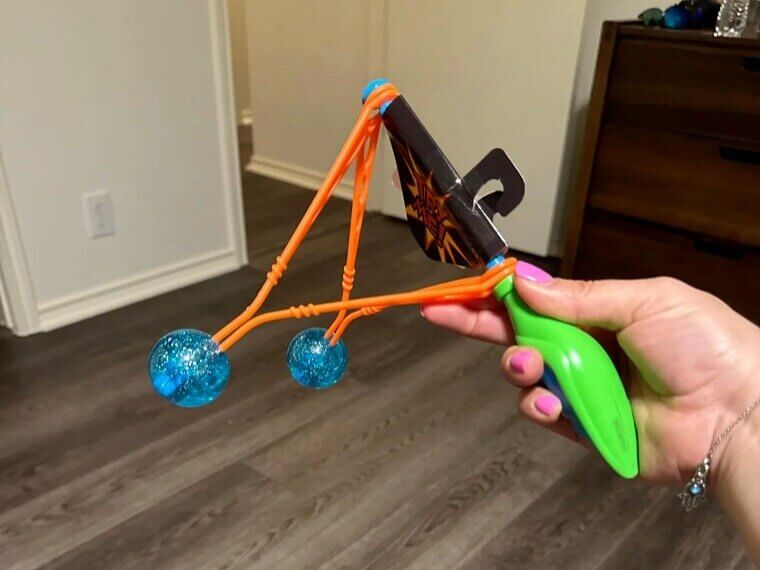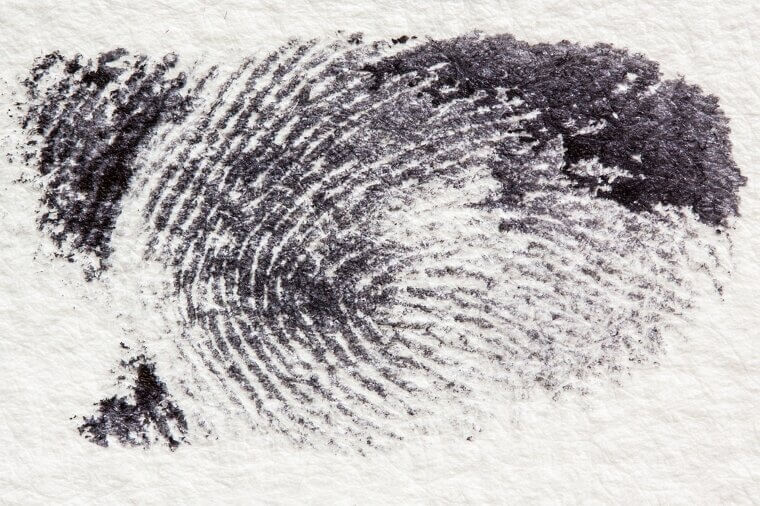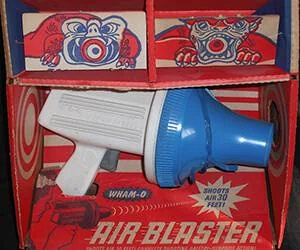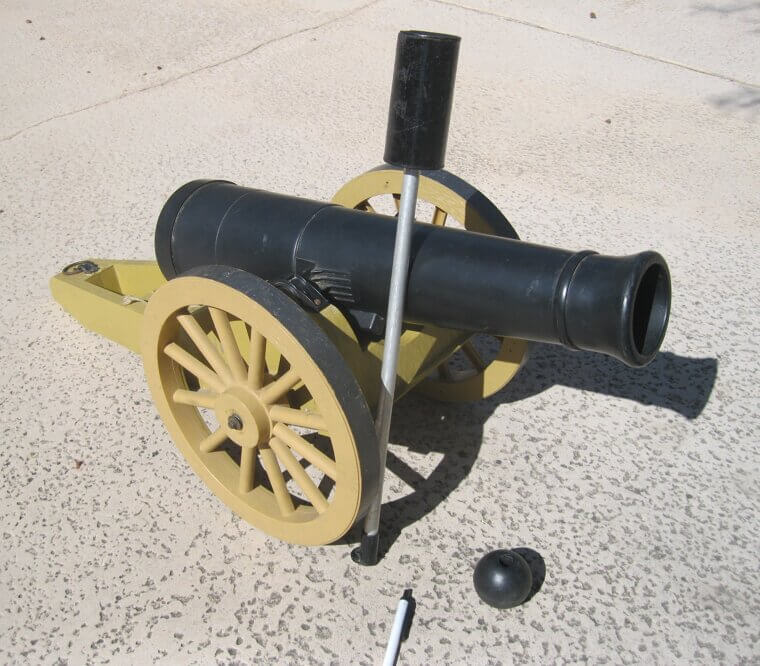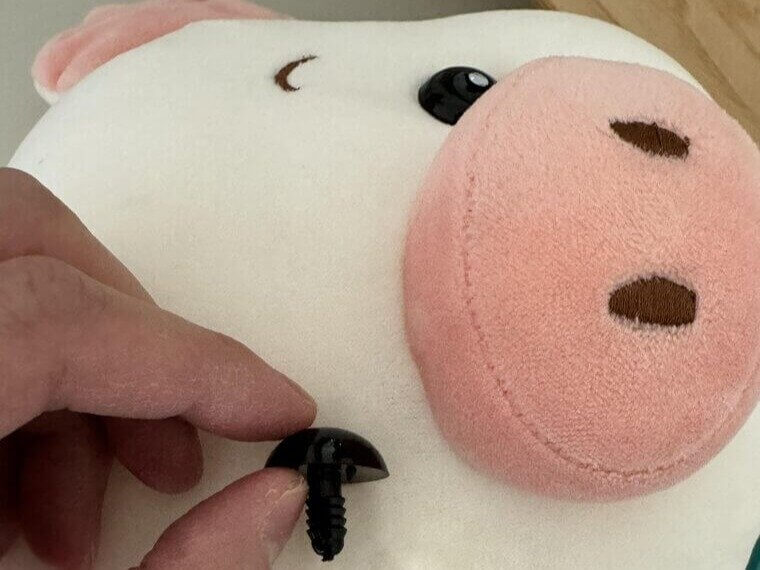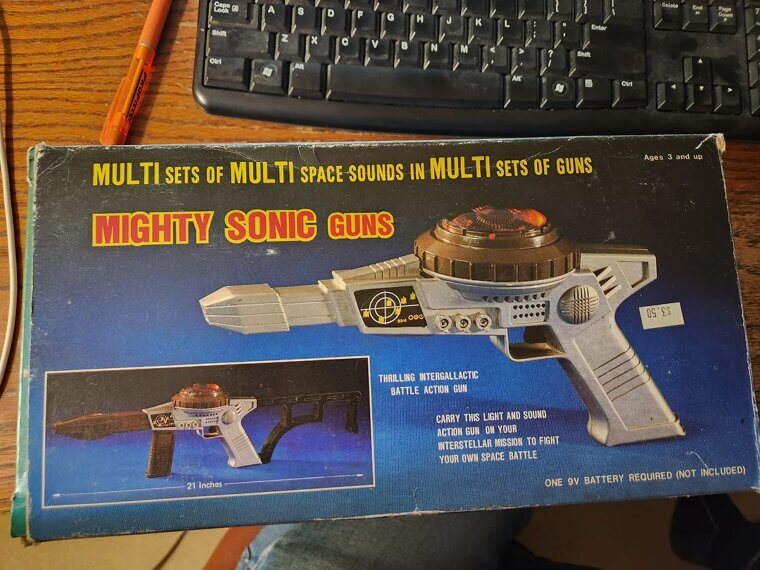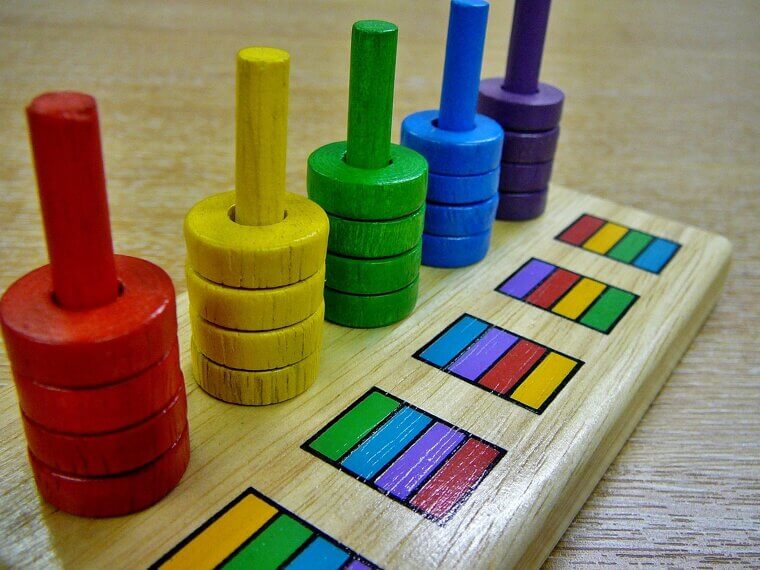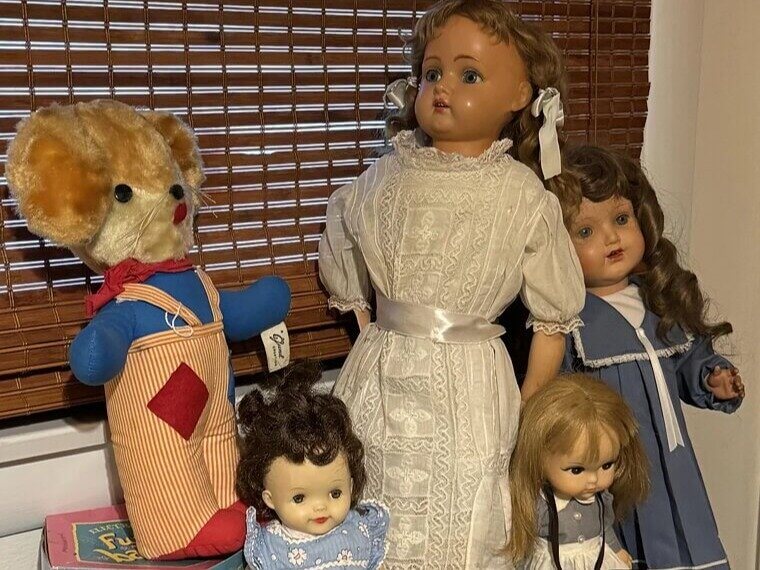Snacktime Cabbage Patch Kids
What could go wrong with a doll that could actually EAT? With no off switch? The motorized mouth had an insatiable appetite and chewed the fake food along with everything else. It was recalled after it started snacking on children’s fingers and hair.
Gilbert’s Glass Blowing Set
Remember when parents thought giving a child a torch and molten glass was a good idea? A.C. Gilbert’s 1930s kits encouraged kids to place fragile glass tubes in their mouths, hover over flaming 200-proof grain alcohol, and shape molten glass slugs! Burns, toxic fumes, shattered hot glass… all part of the creative process!
The next one’s a strangulation necklace marketed to kids. Seriously. Keep reading.
The next one’s a strangulation necklace marketed to kids. Seriously. Keep reading.
Lawn Darts (Jarts)
Heavy, pointed, metal-spiked projectiles designed for ‘backyard fun’ (you can already imagine where this is going). Unsurprisingly, they were banned by the CPSC in 1988 after being linked to child fatalities and over 6,000 emergency room visits.
Gilbert U-238 Atomic Energy Lab (1950)
"Sure, we can sell uranium to the public. But wait… let's sell it to KIDS!" For $50 (1950s dollars!), you could get your hands on this science kit that came with actual radioactive ore samples. It was discontinued due to poor sales, not safety concerns, which somehow makes it worse.
Mattel Creepy Crawlers / Thingmaker
Modern safety standards look away. The thingmaker combined a metal hotplate that reached oven temperatures, toxic liquid plastic that emitted fumes, and zero adult supervision. If the melted plastic fumes didn't get you, the sizzling metal mold definitely did.
Yes, we literally gave hot plates to kids. And that’s not even half of it.
Yes, we literally gave hot plates to kids. And that’s not even half of it.
Sky Dancers
Would it be an exaggeration to call these dolls miniature kamikaze drone weapons? Actually, yes, it would. But still. It took 150 injuries, including broken teeth, eye trauma, and concussions, to recall 9 million of these dancing fairies.
Polly Pocket Sets With Magnets
These were tiny dolls with tiny magnetic accessories. They probably thought, “The magnets definitely won't detach and get swallowed…" Plot twist: they absolutely detached. And kids absolutely swallowed them. If more than one magnet is swallowed, they can attract each other in a child's intestines and cause fatal blockages. Around 4 million playsets were recalled worldwide.
Choking hazards AND magnetic surgery risks. We were wild…
Choking hazards AND magnetic surgery risks. We were wild…
Original Easy-Bake Oven
While the intent to teach kids to bake was wholesome, certain original models could cause severe burns. They also had openings that were perfectly sized to trap and partially amputate little fingers (which it did).
Slip 'N Slide (for Teens/Adults)
You’d think there would be no difference between a kid doing something and an adult doing something, right? There is. Apparently, full-sized humans hitting the slide at speed and abruptly stopping can result in catastrophic neck and spinal injuries. Who knew…
Lead-Painted Vintage Toys
Lead paint was cheap and colorful. Sure, it lowered IQ, caused permanent brain damage, and behavioral problems, but look how shiny those Marx and Chein Industries tin soldiers were! Those vintage toys would make lovely little neurotoxic collectibles today.
Moon Shoes
Mini-trampolines strapped to kids’ feet sounds like a bad idea even in writing. Spoiler: frequent fractures, breaks, and sprains were fairly common. Early 1990s versions by Nickelodeon and later versions by Big Time Toys lacked any real safety standards or testing whatsoever.
Would anyone be interested in some heavy metal poisoning as an accessory for their kids?
Would anyone be interested in some heavy metal poisoning as an accessory for their kids?
Toy Jewelry With Lead/Cadmium
Cute, cheap, and filled with heavy metals. Many small wearable pieces for children, especially those made or imported by brands like Mattel and Claire’s in earlier decades, contained toxic levels of lead and cadmium. Modern chemical limits would trigger immediate recalls and potential criminal charges for these poisonous baubles.
Small Balls / Marbles for Toddlers
Colorful spheres that were perfectly sized to get lodged in windpipes. The resulting choking deaths led to mandatory small-parts regulations forbidding anything under 1.75 inches for under-threes. Classic toys? More like classic choking hazards.
BMX Bikes Without Helmets (1970s–1980s)
In the early BMX boom, protective gear was optional, and as long as you landed in one piece, you were considered safe. Modern regulations and liability laws would never allow toy ads to show kids racing, jumping curbs, and skidding through gravel bareheaded.
Are glass shards flying everywhere, the peak of toy design?
Are glass shards flying everywhere, the peak of toy design?
Shattering Toy Rockets
How did anybody think making rockets that shatter mid-flight and send shrapnel into faces was a good idea? Early model rockets from companies like Estes and Pyro Plastics often had brittle tips that broke mid-air, causing retinal detachments and eye lacerations in several kids. before recalls and design changes were implemented.
Belt Buckle Pistols
Besides being an obvious projectile risk and a public safety hazard, teaching kids to hide weapons in everyday objects seemed... problematic. Modern safety and weapons regulations would immediately ban novelties like belt‑buckle pistols.
Cap Guns With Toxic Powders
Those satisfying BANG sounds came from toxic chemicals that kids naturally handled and breathed. The early Mattel and Marx cap guns risked hearing damage from loud detonations, exposed kids to toxic cap powders, and posed choking hazards from the caps themselves. Explosive powders combined with ear-damaging noise! What's not to love?
Battlestations, parents! This next toy set caused serious problems…
Battlestations, parents! This next toy set caused serious problems…
Battlestar Galactica Missile-Firing Toys (Mattel, 1978)
Mattel’s Battlestar Galactica missile-firing ships (1978) were short-lived icons of sci-fi marketing and poor design foresight. Their spring-loaded missiles led to a child’s fatal choking, prompting recalls and modern projectile-safety laws that still stand; a tragic legacy from the final frontier.
Toys With Exposed Cutting Mechanisms
Toy food choppers with real, unguarded blades! The concept of giving kids sharp, exposed cutting blades now seems criminally negligent, but vintage toy makers called it "educational." Early kits (like Gilbert’s Food Chopper or Transogram kitchen play sets) included actual sharp cutters with zero guards that could remove fingertips.
Exposed Rotor Blade Toys
Did no one think about safety in those days? Early rotor toys, like the Chein and Marx helicopters, featured exposed, high-speed blades that caused serious facial lacerations, which forced the CPSC to demand stricter designs and warnings.
Exposed blades were just the warm-up. These next toys expanded inside you… Seriously…
Exposed blades were just the warm-up. These next toys expanded inside you… Seriously…
Early Water Beads
These were super-absorbent polymer beads that expand to a maximum of 1500x their size when wet (and looked exactly like delicious gummy candies). The beads expanded inside digestive systems like tiny sponge grenades, causing intestinal blockages that required emergency surgery to remove.
Elastic Sling / Catapult Toys
These were great for launching hard projectiles with absolutely zero velocity limits or safety testing. Eye injuries and blunt-force trauma were predictable and frequent. Modern projectile performance limits and mandatory age restrictions would ban most vintage slingshot designs.
Vintage Toy Tea Sets
Beautifully painted ceramic tea sets from brands like Wade and Royal Worcester were charming… and loaded with lead in the glazes. Every pretend sip was a tiny dose of neurotoxin, making them a beautifully crafted hazard for the aspiring junior toxicologist..
Huffing toxic fumes to make bubbles. The height of 70s parenting.
Huffing toxic fumes to make bubbles. The height of 70s parenting.
Super Elastic Bubble Plastic (1970s)
Wham-O's bubble-blowing goo came in tubes with straws; kids squeezed out colorful paste and blew bubbles by inhaling through the straw. The problem? It contained acetone and ethyl acetate that caused dizziness, narcosis, and potential comas. Nothing too concerning…
Mattel’s Agent Zero-M Sonic Blaster (1964)
This hand-pumped bazooka fired booming compressed-air blasts, with retro tests revealing dangerously high decibel peaks. It was the perfect spy fantasy: delivering heroic poses and potential hearing loss with every thunderous shot. A one-way ticket to coolness and tinnitus.
Clackers (Klik-Klaks)
Who doesn’t remember these? Two acrylic balls on a string that you’d swing to make a satisfying clack. The only problem was that they shattered mid-swing, sending high-velocity plastic shrapnel flying into kids’ eyes and faces.
Playing detective with real toxic substances. Nailed it, toy industry.
Playing detective with real toxic substances. Nailed it, toy industry.
Fingerprint and Crime Scene Kits (Asbestos)
Yes, you read that right: rare 1950s kits, like Gilbert’s fingerprint and crime scene sets, sometimes contained asbestos powder. Any trace of asbestos in modern toys triggers immediate bans, mass recalls, and criminal investigations, which is a far cry from the old standard of “if it kills you slowly, it’s fine.”
Wham-O Air Blaster
Anything with the words "Wham-O" and "Blaster" together should've never been given to children. This innocent-looking plastic gun fired "only air", except that air was compressed. Kids naturally pointed it at their ears and faces, resulting in ruptured eardrums and eye injuries. It was pulled from the market in the late 1970s.
Johnny Reb Cannon (Marx Toys, 1961)
A 30-inch Civil War cannon replica that fired hard plastic cannonballs over 30 feet using a spring-loaded barrel. It was less a toy and more a portable artillery piece, and was perfectly engineered to take out a window (or a sibling).
Plush Toys With Detachable Hard Eyes / Buttons
Cute little plush toys were the perfect companions for both play and sleep for kids. The only problem was that their plastic eyes and noses could pop off and turn into perfect choking hazards as well. A few tragic choking incidents pushed regulators to act, birthing the modern small-parts laws that keep today's soft teddy bears safely blind.
Realistic machine gun sounds for your five-year-old were considered to be perfectly healthy…
Realistic machine gun sounds for your five-year-old were considered to be perfectly healthy…
Remco Sound FX Machine Gun (1950s)
A plastic submachine gun toy that produced ear-piercing explosive sounds (impulse noise levels over 140 dB) using percussion caps. Reports of hearing damage and frightened neighbors eventually made the “authentic battle sound” a little too real for regulators.
Painted Wooden Blocks and Pull Toys (Pre-1978)
Those classic, cheerful blocks and pull-toys (think Fisher-Price classics and early Lincoln Logs) looked harmless but were coated in vibrant, lead-based paint. For any teething toddler, they offered a deliciously toxic snack, with a side of potential poisoning and developmental issues with every gnaw; a charming, mind-numbing hazard.
Celluloid Dolls
Pre-1960s celluloid dolls and toys (like the ones from Effanbee, Ideal, and Sears) were glossy, lightweight, and beautiful, but also terrifyingly flammable. One stray spark could ignite them in seconds, which is why they would be banned today.

